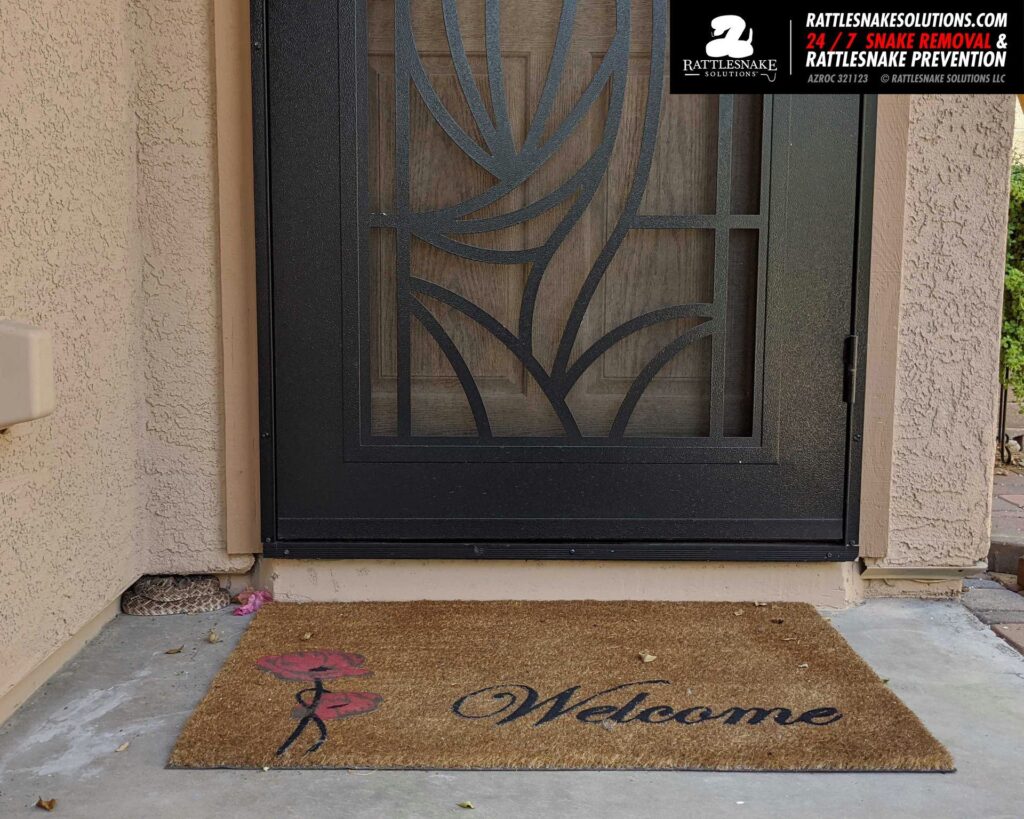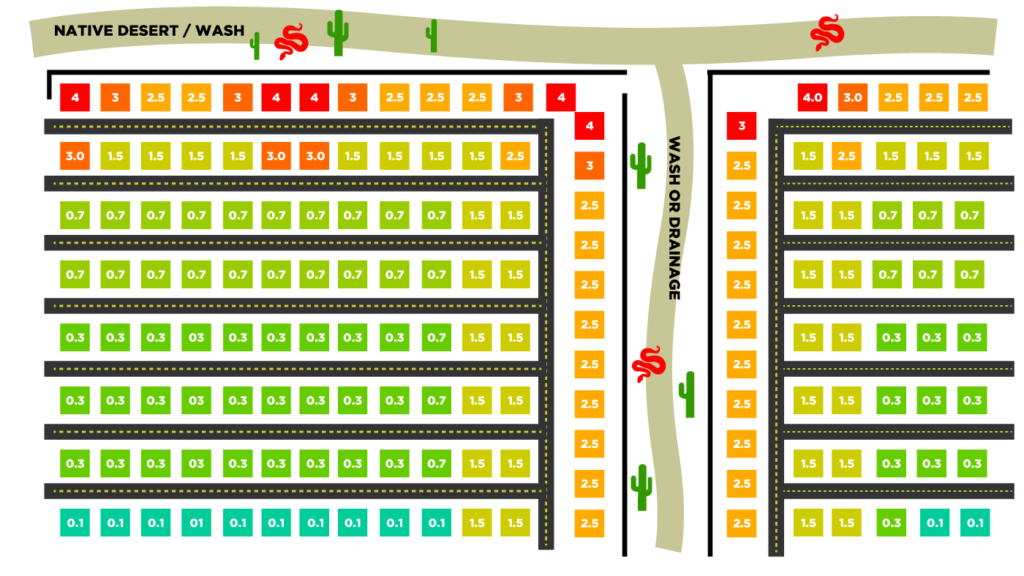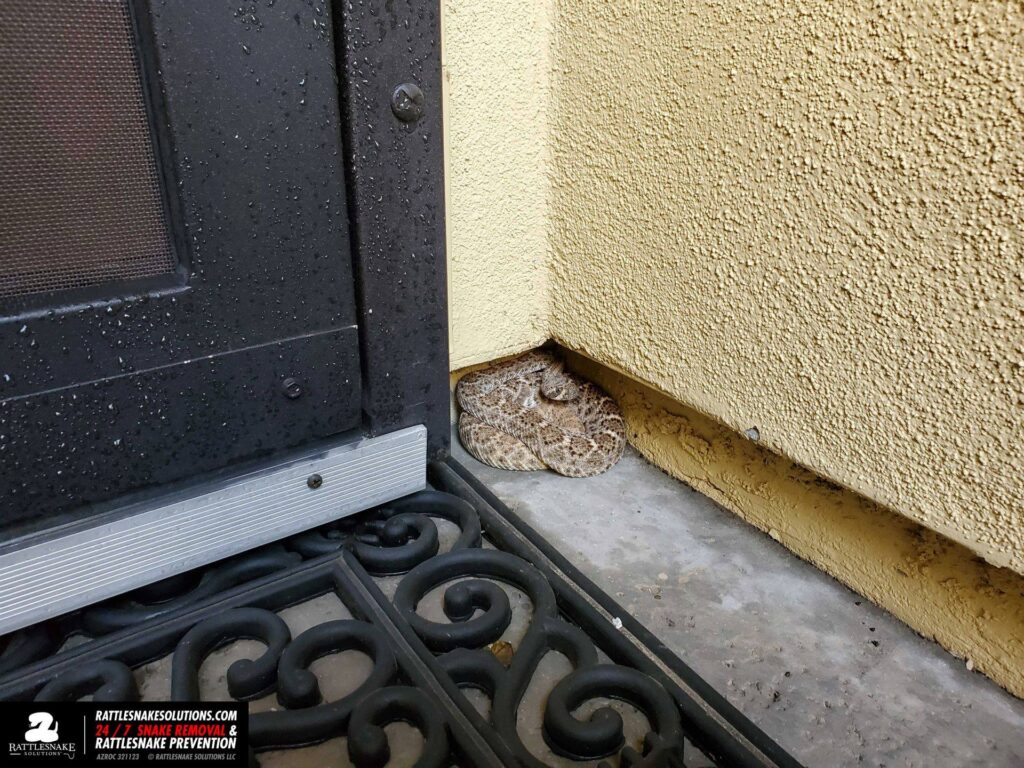If you’re looking to move to Arizona, this question may be on your mind. Rattlesnakes seem to be everywhere in the state, so where can you buy a home and know what to expect? Fortunately, rattlesnakes are creatures of habit and where they are found tends to be fairly predictable. This is our overview of what we know about rattlesnakes and where they can be in the city, and a new tool we’ll be using to help communicate this to new Arizona residents.
Check the rattlesnake removal records!
While we will never make any information about an address or community public, we do share information based on zip code. Our removal activity log is available to the public, and is now searchable by zip code. If you’re curious about an area, pop in the zip code and you can see what kind of snake activity has occurred there. Keep in mind that zip codes can be large, so what happens at one house could be literally impossible just a couple of miles away. However, we won’t get more specific than this only to protect the privacy of our customers.

The further you are from native desert, the fewer rattlesnakes are found.
Rattlesnakes are specialized desert reptiles, which means that they aren’t great at new things. While a Sonoran Gophersnake or Kingsnake might be found deep into the valley, making use of well-watered lawns and a growing roof rat problem, rattlesnakes are different. Without the presence of native desert habitat, rattlesnakes will not be found.
If you select a home on the interior of the valley, more than a half-mile from the nearest native habitat, your chances of seeing a rattlesnake in your yard are exceedingly low. That doesn’t bar a freak happening, like a snake that hitches a ride in a truck or someone releasing one, but those aren’t meaningful considerations.
The 5-year “Snakey” scale
The easiest way to look at it would be to use this general formula. It’s based on an estimation from our experience and data collected from relocation calls over a 10 year period. It’s not exact, but can be used as a general guideline that is accurate enough to help make home-buying decisions. If you want to go deep on a lot of this, here’s peer-reviewed research using our relocation data to shows some of the reasons how and where contact zones occur.
The scale I will use here is how many rattlesnakes a homeowner may encounter per 5 year period of occupancy. For example: a score of 1.5 means that a homeowner can expect 1.5 rattlesnake encounters per 5 years of occupancy.

Score: 4 on the Snakey Scale. From the nearest native desert habitat, the first row of immediately adjacent homes has the highest chance of encounters, at greater than 100% chance if occupied per 5 years. This group includes, specifically, homes found at the corners or street-ends, where the highest rate of encounter occurs. Homeowners in this situation should to see a rattlesnake about every year or every other year.

Score: 3 on the Snakey Scale. From there, the second home or row (across the street) has a pretty high rate of encounter, but not nearly. Rattlesnakes tend to stick closer to access points. While they may be more inclined to just pop around the corner and stick to the wall, we nearly as often see them use the entire side of the first house into the second yard, and across the street as well. Homes in this situation will likely see a few rattlesnakes in a 5 year period of occupancy.
Score: 2.5 on the Snakey Scale. Any home in the first street row backing up to the desert. The likelihood in these instances is that the snake could come from both sides, regardless of the placement of the wall. Fortunately this can be easliy fixed, which may dramatically reduce that figure.
Score: 1.5 on the Snakey Scale. Homes across the street from the row immediately next to the edge of the desert may expect to see 1 or 2 rattlesnakes in the yard during a 5 year time period.

Score: 0.7 on the Snakey Scale. Homes on the first 2 (or so) interior streets could encounter a rattlesnake at some point, but it’s also possible to not see one at all during a 5 year occupancy.

Score: 0.3 on the Snakey Scale. Homes greater than 2 streets in from native desert habitat, but closer than 5 streets may see a rattlesnake in their yard at some point, but a slim majority will not.
Score: 0.1 on the Snakey Scale. Homes more than 5 streets in, but less than 10, from the nearest native desert habitat could see a rattlesnake, but it’s not entirely likely. If it is one, it would more likely be due to construction, displacement, or a wandering baby rattlesnake. Around 1 in 5 homes will experience a rattlesnake in the yard in a 5-year stay.
Score: 0.05 on the Snakey Scale. Homes that are more than 10 streets in from the nearest desert habitat will most likely never encounter a rattlesnake in their yard. However, it’s still a possibility, and homeowners should continue to be on guard and follow all of the available safety precautions.
Score: 0 on the Snakey Scale. Homes on the interior of the city, more than a mile from the nearest native desert habitat, have almost no chance of seeing a rattlesnake in the yard. Having to cross numerous roadways, a maze of walls and fences, and limited access would make it incredibly hard for a rattlesnake to find its way there. In addition, there’s probably just nothing there that the snake would want, so it wouldn’t be all that motivated to make the journey.
But of course, it’s not that simple. Rattlesnakes are part of a dynamic system.
It should be stated about using this method, too, that there are many variables at play that have nothing to do with location. This is just a general guideline that we use ourselves when evaluating a property for likelihood of rattlesnake encounters. They can usually be mitigated by preparation and snake fencing, and ongoing education. This is also not an indication of how many rattlesnakes actually visit the property, but of how many may be encountered. If you’re a gardener, have a dog, or spend a lot of time in your backyard, you can expect a greater rate of encounter than someone who seldom goes back there.
This is also specific to rattlesnakes. Each group of snakes will have its own scale, based on what it needs and prefers. However, since they’re not harmful, we’re just talking about rattlesnakes here. However, you can use the same guide to loosely estimate similar results for other species, with the knowledge that it’s an entirely different ballgame for more adaptable species.
Additionally, this is based on natural rattlesnake behavior and excludes factors like construction or artificial placement, botched relocation jobs from the fire department, and other activity that more or less isn’t what a rattlesnake would choose to do. This list should not in any way be taken as a guarantee that you’ll never see a snake if you follow these general guidelines.

How do I know if it’s native desert, or where this scale should start from?
That can be tricky, since neighborhoods are not so black and white as described here. For instance, a 2-acre patch of desertscrub a couple miles into the city just doesn’t have the same quality or snake-carrying capacity as untouched saguaro and Sonoran desert at the edge of the valley … so be subjective.
A good rule of thumb: if you see cactus that wasn’t planted there by someone, you can count on that as being native habitat, and rattlesnakes probably live there. Especially with the presence of rodent holes, you can count on there at least being a strong likelihood of rattlesnake presence.
Watch the washes!
One particular feature to watch for are washes. To our friends moving here from outside the desert southwest: a wash is our word for “stream” or “creek”, or basically a drainage without water in it for most of the year. These areas are one of the most important features for rattlesnakes of most species, and much of their activity is centered around them. Think of washes like desert highways, where animals can travel, find food, and generally find quite useful.
In most of the neighborhoods at the edge of the desert, there are washes that snake deep into the interior of the community. This can’t be avoided – these washes are natural waterways and necessary to prevent flooding and other issues. However that does mean that these homes have a higher saturation level of contact with natural desert habitat than other neighborhoods might. In some areas, washes are common enough that there really aren’t any homes found that don’t score relatively high on our Snakey Scale. If you’re overly concerned with rattlesnakes (or snakes in general, really) the further your new home is from a wash, the better.
But, should you avoid your dream house if snakes are present? No!
Just like moving to the northeast might mean that ticks are on your list of concerns, or moving to Alaska might put bears on your radar, Arizona has snakes. For the most part, you made a pact with Arizona the moment you decided you’re moving here: snakes are here, but they might be part of your life.

However, that isn’t nearly as bad as most people feel it is, and it’s generally easy enough to work with and be totally safe. You can have your dog trained, for instance, to avoid rattlesnakes, and you can make landscaping decisions that make the yard either inaccessible or unuseful for rattlesnakes. Additionally, you can help yourself feel much more comfortable around snakes simply by taking the time to learn about them. In fact, if you’ve read this far into this article, you’re probably the exact type of person who would continue that education and dissolve the fear of snakes.
If you find the perfect home, be careful not to rule it out because of snakes. For the most part, it’s just not the threat most people believe it to be. Even though the fear of them is certainly real, even that can be challenged and defeated in most cases. To either end, if you need any help to sort through it all, feel free to contact us about any area and we’ll tell you what we can. While we obviously can’t divulge any activity that’s actually happened at a house, we can advise on the general area and work with you to be comfortable … or to high-tail it to the center of the city!
